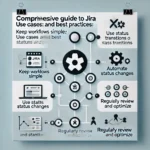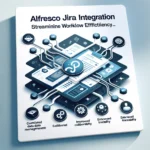TestNG vs. JUnit 5: A Comprehensive Comparison of Java Testing Frameworks
In the realm of Java development, automated testing has become an indispensable practice to ensure the quality and reliability of software applications. Two popular testing frameworks used by Java developers are TestNG and JUnit 5. While both frameworks serve the same purpose of unit testing, they have distinct features and capabilities that can influence your choice. In this blog post, we will compare TestNG and JUnit 5, highlighting their strengths and differences, to help you make an informed decision when selecting a testing framework for your Java projects.
TestNG: The Versatile and Powerful Testing Framework
TestNG, which stands for “Next Generation,” was developed to overcome some limitations of JUnit and provide additional functionalities. It is known for its flexibility and adaptability, making it a popular choice among Java developers.
Advantages of TestNG
- Test Configuration: TestNG allows developers to configure test suites using XML files, providing a more flexible way to organize and execute tests based on different parameters and conditions. This makes it ideal for projects with complex test scenarios.
- Parallel Execution: TestNG natively supports parallel test execution, allowing you to distribute tests across multiple threads, processes, or even machines. This feature can significantly reduce test execution time for large test suites.
- Dependency Management: TestNG enables test dependency management, where you can define relationships between test methods, ensuring that a test runs only if its dependencies pass successfully. This feature promotes better test design and improves test reliability.
- Annotations and Grouping: TestNG offers a wide range of annotations, allowing developers to define test behaviors, set priority, and handle pre- and post-test actions. Grouping tests based on specific criteria is straightforward, allowing for better organization and readability of test cases.
https://synapsefabric.com/2023/07/26/testng-vs-pytest-a-comparison-of-testing-frameworks-for-java-and-python/
JUnit 5: The Revamped and Modern Testing Framework
JUnit 5 is the latest iteration of the well-established JUnit framework, designed to overcome limitations in JUnit 4 and introduce modern testing concepts. It brings significant improvements and new features to the testing landscape for Java developers.
Advantages of JUnit 5
- Modularity: JUnit 5 is designed with a modular architecture, making it easier to customize and extend functionalities. Developers can choose and integrate only the modules they need, reducing unnecessary dependencies.
- Lambda Support: JUnit 5 leverages Java 8’s lambda expressions, enabling developers to write more concise and expressive test cases, making test code easier to read and understand.
- Parameterized Tests: JUnit 5 introduces built-in support for parameterized tests, allowing you to run the same test with multiple input values, making it easier to test various scenarios with minimal code duplication.
- Extension Model: JUnit 5 provides a powerful extension model, allowing developers to add custom behaviors and features to tests easily. This extensibility promotes better test organization and maintainability.
Choosing the Right Framework
The choice between TestNG and JUnit 5 depends on your project’s specific requirements and your team’s familiarity and preferences.
Choose TestNG if
- You require a more flexible and powerful testing framework, especially for projects with complex test scenarios and parallel execution needs.
- Dependency management and detailed test configuration are essential for your testing process.
- You are already familiar with TestNG and have existing test suites built with it.
Choose JUnit 5 if
- You prefer a more modular and modern testing framework, especially if you are working with Java 8 or higher.
- You value the simplicity and readability of tests, especially with JUnit 5’s lambda support and parameterized tests.
- You want to take advantage of JUnit 5’s extension model to add custom behaviors and features to your tests.
Both TestNG and JUnit 5 are excellent testing frameworks with distinct advantages. TestNG offers more advanced features like parallel execution and test configuration flexibility, making it suitable for larger, enterprise-level projects. JUnit 5, on the other hand, brings a modern and modular approach, making it an attractive choice for projects leveraging Java 8’s features and favoring simplicity and expressive test cases.
Ultimately, the best choice for your project depends on its specific requirements, your team’s preferences, and the level of familiarity with the frameworks. Regardless of your decision, adopting automated testing with either TestNG or JUnit 5 will lead to improved code quality, faster development cycles, and a more robust software product.






